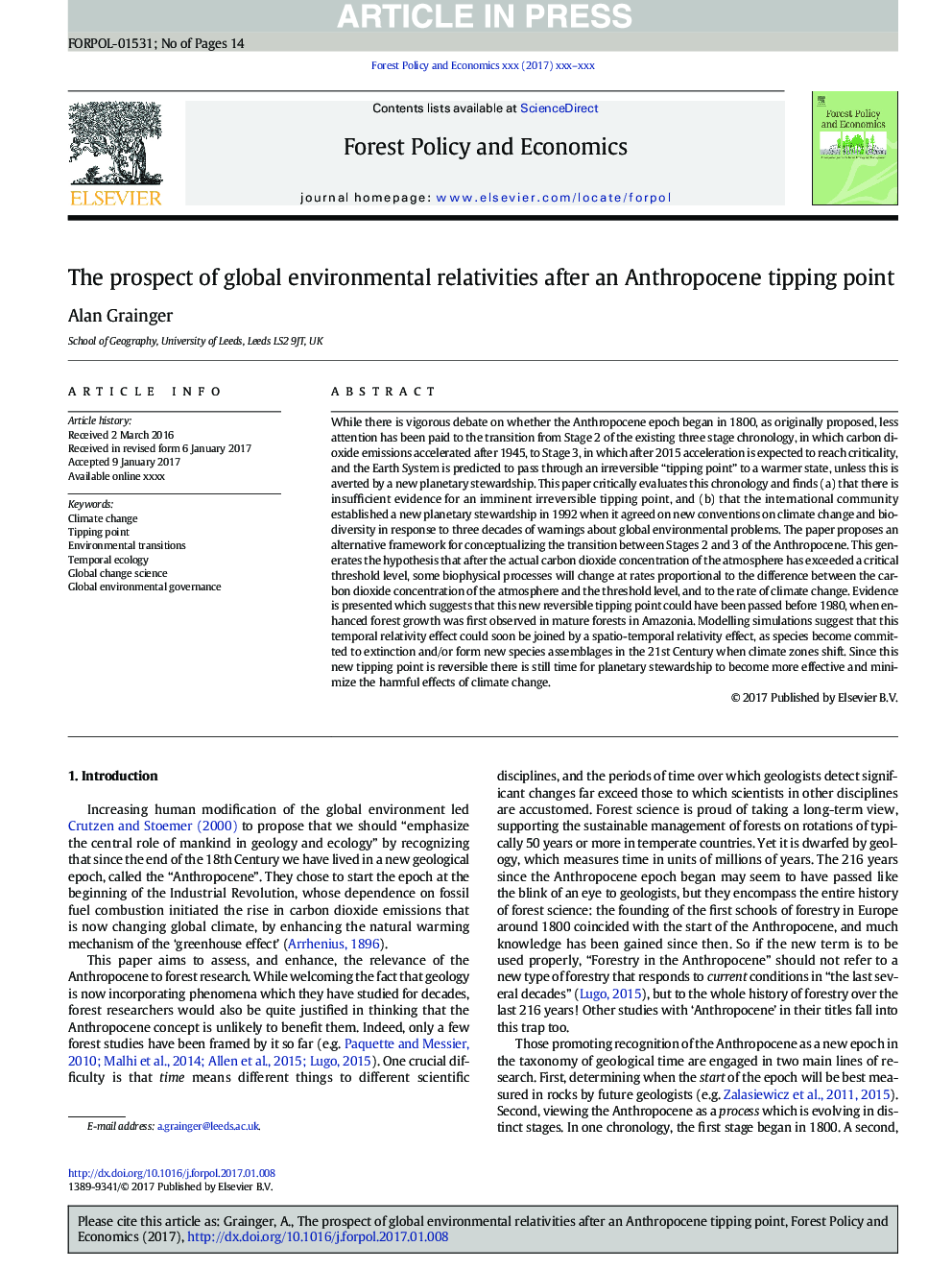| Article ID | Journal | Published Year | Pages | File Type |
|---|---|---|---|---|
| 4759791 | Forest Policy and Economics | 2017 | 14 Pages |
Abstract
While there is vigorous debate on whether the Anthropocene epoch began in 1800, as originally proposed, less attention has been paid to the transition from Stage 2 of the existing three stage chronology, in which carbon dioxide emissions accelerated after 1945, to Stage 3, in which after 2015 acceleration is expected to reach criticality, and the Earth System is predicted to pass through an irreversible “tipping point” to a warmer state, unless this is averted by a new planetary stewardship. This paper critically evaluates this chronology and finds (a) that there is insufficient evidence for an imminent irreversible tipping point, and (b) that the international community established a new planetary stewardship in 1992 when it agreed on new conventions on climate change and biodiversity in response to three decades of warnings about global environmental problems. The paper proposes an alternative framework for conceptualizing the transition between Stages 2 and 3 of the Anthropocene. This generates the hypothesis that after the actual carbon dioxide concentration of the atmosphere has exceeded a critical threshold level, some biophysical processes will change at rates proportional to the difference between the carbon dioxide concentration of the atmosphere and the threshold level, and to the rate of climate change. Evidence is presented which suggests that this new reversible tipping point could have been passed before 1980, when enhanced forest growth was first observed in mature forests in Amazonia. Modelling simulations suggest that this temporal relativity effect could soon be joined by a spatio-temporal relativity effect, as species become committed to extinction and/or form new species assemblages in the 21st Century when climate zones shift. Since this new tipping point is reversible there is still time for planetary stewardship to become more effective and minimize the harmful effects of climate change.
Related Topics
Life Sciences
Agricultural and Biological Sciences
Forestry
Authors
Alan Grainger,
